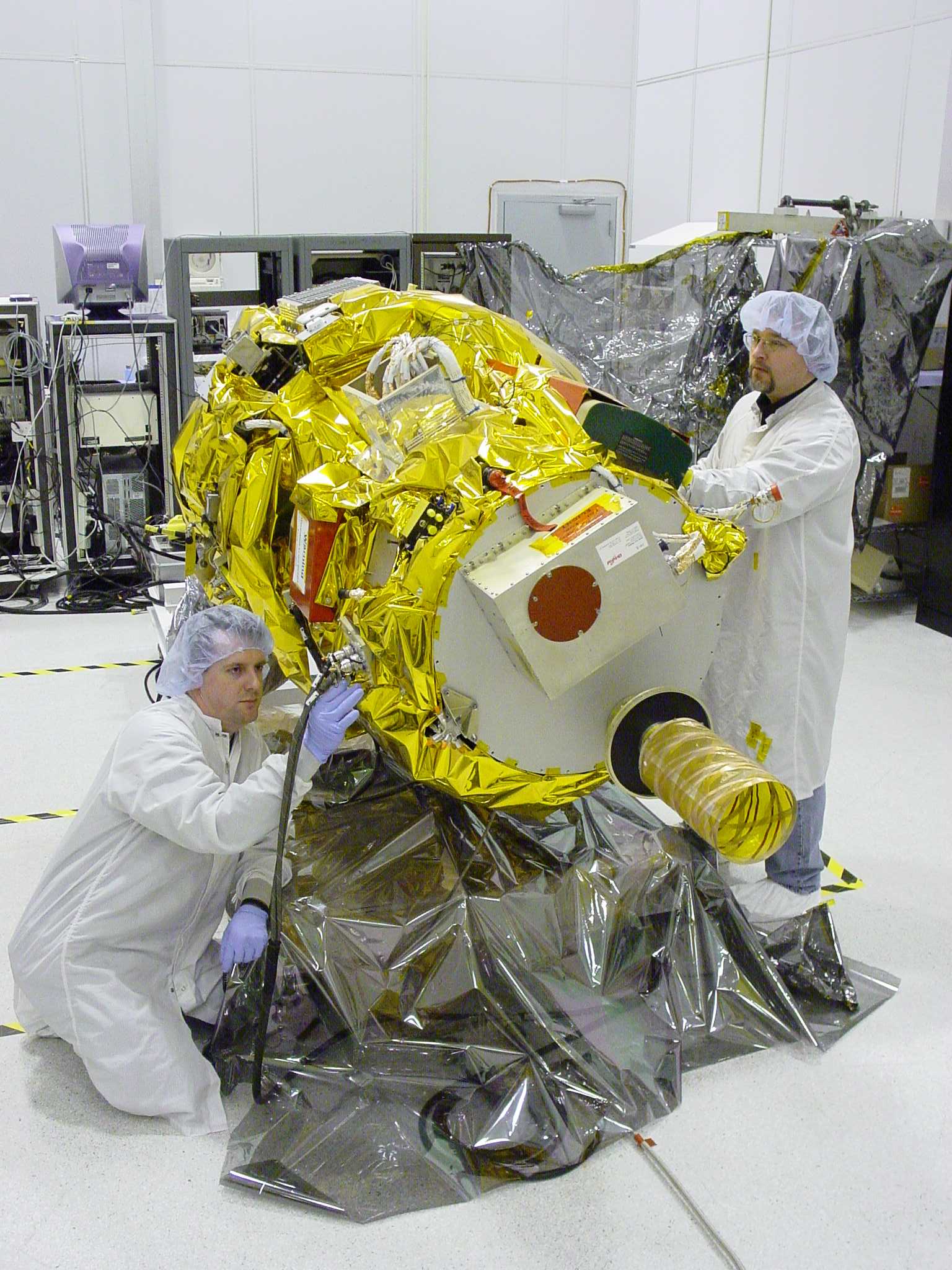Five years ago today — April 15, 2005 — the “Demonstration of Autonomous Rendezvous Technology” (DART) spacecraft was launched by a Pegasus-XL rocket from Orbital Sciences Corporation’s L-1011 carrier aircraft flying out of Vandenberg AFB.

(Technicians prepare the DART spacecraft for flight. Orbital Sciences Corporation image from http://www.msfc.nasa.gov/news/dart/. Click to enlarge.)
The DART spacecraft was meant to rendezvous with and maneuver around the Multiple Paths, Beyond-Line-of-Sight Communications (MUBLCOM) satellite; however, the mission was not successful.
From the mishap investigation report,
DART performed as planned during the first eight hours through the launch, early orbit, and rendezvous phases of the mission, accomplishing all objectives up to that time, even though ground operations personnel noticed anomalies with the navigation system. During proximity operations, however, the spacecraft began using much more propellant than expected. Approximately 11 hours into what was supposed to be a 24-hour mission, DART detected that its propellant supply was depleted, and it began a series of maneuvers for departure and retirement. Although it was not known at the time, DART had actually collided with MUBLCOM 3 minutes and 49 seconds before initiating retirement.
I don’t know if they characterized it as a “successful failure,” in that they learned something useful from it, but it’s important to try these things, even if some of them fail. As I heard Howard Hendricks say many years ago, “If you’re not falling down, you’re not learning to ski.”








